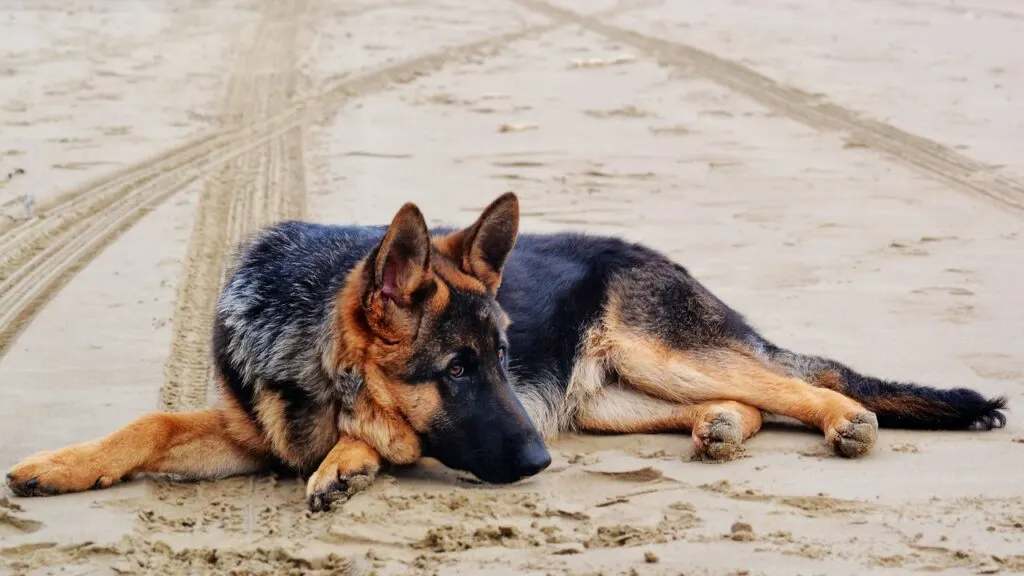Longest Living Large Dog Breeds
Getting a dog is an important life event. However, you shouldn’t settle on the first pair of puppy eyes you see.
Whether you buy a puppy or adopt a dog from your local shelter, consider its breed’s average lifespan. Knowing which dog breeds live the longest will help you select a furry companion that will stay by your side for many years to come.
While big dogs have a shorter average lifespan than small dogs, some large breeds live long, happy lives.
Below, we highlight several breeds that grow large and have a long life expectancy to help you make the right choice.
Key Takeaways
- The longest-living large dog breeds include German Shepherds, Poodles, Australian Cattle Dogs, Alaskan Malamute, Anatolian Shepherds, Dobermans, Giant Schnauzers, Beagles, and Belgian Malinois.
- To maximize the lifespan of a large dog breed, provide proper nutrition, regular exercise, veterinary care, and a loving and stimulating environment.
- Several factors determine a large breed dog’s lifespan, including genetics, diet, exercise, and breeding practices.
What Factors Contribute to a Long Lifespan in Large Dog Breeds?

The life expectancy of large dog breeds is influenced by several factors. For instance, genetics plays a significant role, as some breeds have better genetic makeup for longer lifespans.
Regular veterinary check-ups and vaccinations are also crucial. Failure to meet those needs can make maintaining your dog’s health much more challenging.
On top of that, providing a balanced diet and ample exercise helps maximize your large dog’s lifespan. Responsible breeding practices and focusing on health and genetic diversity can further promote longer lifespans in these breeds as well.
Which Dog Breeds Have the Longest Lifespan?
| Dog Breed | Average Lifespan |
|---|---|
| German Shepherd | 9 – 13 years |
| Australian Cattle Dog | 10 – 15 years |
| Giant Schnauzer | 12 – 15 years |
| Beagle | 12 – 15 years |
| Standard Poodle | 12 – 15 years |
| Alaskan Malamute | 10 – 14 years |
| Doberman | 10 – 13 years |
| Belgian Malinois | 10 – 14 years |
| Anatolian Shepherd | 10 – 13 years |
Several dog breeds are known for their long lifespans, including Doberman, German Shepherd, and Australian Cattle Dog.
Still, keep in mind that individual dogs’ lifespans may vary. Factors like genetics, overall health, and lifestyle can affect it — both negatively and positively.
Let’s go over some of the large dog breeds that live the longest.
German Shepherd
The GSD, or German Shepherd dog, is a large breed that is popular for its numerous positive qualities.
Shepherds can live for an average of 9 to 13 years, with some even reaching 14 years.
A German Shepherd is best known for being courageous, loyal, and protective of its dog owners. This factor makes for a perfect guard dog, which is why many consider German Shepherds as treasured family pets.
Additionally, German Shepherds are frequently ranked among the top dog breeds due to their extreme intelligence. They are easy to train, have high cognitive ability, and can understand several commands.
Still unconvinced? Check out the video below to see how smart German Shepherds really are!
Australian Cattle Dog
Australian Cattle Dogs, also known as ACDs or blue heelers, are considered one of the longest-living dog breeds.
Until February 2023, the Guinness Book of World Records recognized one blue heeler named Bluey as the oldest dog to have ever lived at 29 years and 5 months.
But on average, ACDs don’t live as long as Bluey. Instead, they live between 12 and 15 years old.
These dogs are known for their intelligence, agility, and herding abilities. They are highly active dogs that require mental stimulation and plenty of exercise.
Giant Schnauzer
Giant Schnauzers are another long-living large dog breed. These dogs typically live between 12 to 15 years.
As pups, they are full of energy and can be quite lively. They love to play, run around, and explore their surroundings.
It’s vital to provide Giant Schnauzers, especially the adult ones, with plenty of physical exercise and mental stimulation to help burn off their excess energy. Regular walks, playtime, and engaging toys are essential to keep them happy and prevent destructive behavior.
Beagle
Beagles have a relatively long lifespan for a large breed dog. On average, they live between 12 to 15 years.
These dogs are known for their affectionate and outgoing personalities. They are scent hounds and have a strong sense of smell. Because of that, they were frequently used for tracking and hunting purposes.
If you are unsure whether a Beagle is the perfect dog for you, this video might help you make up your mind.
Standard Poodle
Poodles are some of the largest dogs. They’re also among the breeds that live the longest, with an average lifespan of 12 to 15 years.
These dogs are popular family pets, known for being playful, energetic, smart, and easy to train. They live for a long time when given ample amounts of playtime.
Poodles come in three sizes — standard, miniature, and toy. While the standard poodle is considered a large breed, the miniature and toy poodles are smaller in size, making them your perfect lap dog.
Alaskan Malamute
The Alaskan Malamute is a well-known sled dog with a relatively long lifespan.
Dogs of this breed have incredible strength, endurance, and ability to withstand harsh weather conditions. Given that, it’s no surprise they make for ideal partners during sled rides across the cold Alaskan terrain.
Besides their work as sled dogs, Alaskan Malamutes have also gained popularity as family pets. It’s all thanks to their friendly and gentle nature. They are loyal, affectionate, and good with children, making them great companions for active families.
In terms of lifespan, Alaskan Malamutes have a relatively long life expectancy compared to other dog breeds. On average, they can live between 10 to 15 years. However, with proper care, nutrition, and regular exercise, some Alaskan Malamutes have been known to live even longer, with some reaching 16 years.
Doberman
The Doberman Pinscher’s sleek and muscular build separates it from other larger dogs. They were initially bred to be guard dogs and are commonly trained to be service dogs by the police and armed forces to this day.
Despite this, Doberman Pinschers are also people-oriented, earning them the nickname “velcro-dogs.” They adore their owners so much that they will follow them from room to room.
These dogs have an average life expectancy of about 10-13 years. Yet, with a well-balanced diet and regular exercise, some Dobermans can live longer.
Belgian Malinois
The Belgian Malinois is a large breed of dog known for its intelligence, athleticism, and loyalty. They have an average lifespan of around 10 to 14 years. Belgian Malinois German Shepherd Mixes, on the other hand, have a longer life expectancy of 12 to 14 years.
Belgians have strong territorial and protective instincts. They are often used as working dogs in police and military work, search and rescue, and service dogs.
Remember, Belgian Malinois are innately protective. For that reason, it’s important to socialize and train them properly from an early age. A tough but gentle discipline is ideal for Belgian pups.
Anatolian Shepherd
The Anatolian Shepherd has a relatively long lifespan compared to other dog breeds. It is an excellent family dog that can bring much joy to any homestead.
As one of the longest-living dog breeds, Anatolian Shepherds can live between 10 to 12 years. These dogs are energetic, intelligent, devoted, and adaptable. They will fiercely defend their owner, pups, and smaller dogs.
To deal with a dog this dominant and demanding, owners should be firm yet affectionate leaders.
How Can I Maximize a Large Dog Breeds Lifespan?

As fur parents, we want our babies to live as long as possible. This way, we can create many precious memories together.
You can take several steps to maximize a large dog’s lifespan.
- Provide a balanced and nutritious diet: Feed your large dog a high-quality diet that is appropriate for their size, breed, and age. Giving healthy treats and vet-approved supplements can also help your dog to live longer. Consult your veterinarian for specific dietary recommendations and ensure your dog receives the necessary nutrients to maintain its health.
- Regular exercise: Large dogs require regular and consistent exercise to keep their weight in check, prevent obesity, and promote overall good health. Daily walks, playtime, and other physically stimulating activities work best to keep them active and mentally stimulated.
- Regular veterinary check-ups: Schedule regular visits to the veterinarian for examinations and vaccinations. Routine check-ups can help identify potential health issues early on, allowing for timely intervention and treatment.
- Dental care:Proper dental care is crucial for keeping your dog healthy. Good oral hygiene helps prevent periodontal disease and other dental issues. Regularly brush your dog’s teeth, provide dental chews or toys, and consider professional teeth cleanings when necessary.
- Preventive care and vaccinations: Stay up to date on vaccinations, flea and tick preventives, and heartworm preventative medications as recommended by your veterinarian. Regular preventive care can help protect your dog from various infectious diseases and parasites.
- Grooming and hygiene: Keep your large dog clean and well-groomed. Regular bathing, brushing, and nail trims are essential for maintaining healthy skin, coat, and overall hygiene.
- Environmental safety:Create a safe living environment for your dog by eliminating potential hazards, such as toxic plants, chemicals, or unsafe objects. Secure your home or yard to prevent accidents or escapes that could put your dog’s life at risk.
- Mental stimulation: Large dogs need mental stimulation to prevent boredom and destructive behavior. Engage in training sessions, interactive toys, and puzzle games to keep their minds active and sharp.
- Weight management: Obesity can significantly reduce a dog’s lifespan and contribute to various health problems. Monitor your dog’s weight and body condition, and adjust their diet and exercise if needed to maintain a healthy weight.
- Provide love and attention: Give your large dog plenty of love, attention, and socialization. Dogs thrive when they feel loved and part of the family. Spending quality time together strengthens the bond and promotes mental well-being.
Final Thoughts
The longest-living large dog breeds, such as German Shepherds, Poodles, and Australian Cattle Dogs, have the potential for extended lifespans when provided with the right care and environment.
Maximizing a large dog’s lifespan involves a combination of multiple factors, including proper nutrition, regular exercise, routine veterinary care, and a loving home. Genetics, diet, training routine, and responsible breeding practices also play critical roles in determining the lifespan of our gentle four-legged giants.
Remember, dogs that live the longest are those that feel loved by their owners. Take good care of your furry friend, and you’ll be satisfied with the results.
Frequently Asked Questions
Can mixed-breed dogs live longer than purebred dogs?
Yes, they can. Mixed-breed dogs often have a larger gene pool, which can contribute to better overall health and increased lifespan compared to purebred dogs.
Do small-breed dogs usually live longer than large-breed dogs?
Small breeds, such as Chihuahuas, Shih Tzus, and Beagles, typically live between 10 and 17 years on average. While smaller breeds generally have longer lifespans than larger breeds, it’s not solely determined by size. Genetics, diet, and overall care also play a crucial role in a dog’s lifespan.
Which dog breeds have a large gene pool and tend to live longer?
Dog breeds with a large gene include mixed breeds, Poodles, Australian Cattle Dogs, and Belgian Malinois.
Are there any specific health considerations for long-living dog breeds?
Dogs that live longer may be prone to specific age-related health issues, such as arthritis or dental problems. Regular vet check-ups and a healthy lifestyle can help mitigate these issues.
Do large breed dogs have more health issues compared to small breeds?
Large-breed dogs are more prone to certain health issues due to their size. The most common ones among them are hip dysplasia and joint problems. However, with proper care and attention, these issues can be managed, and large-breed dogs can live a longer and healthier life.



















